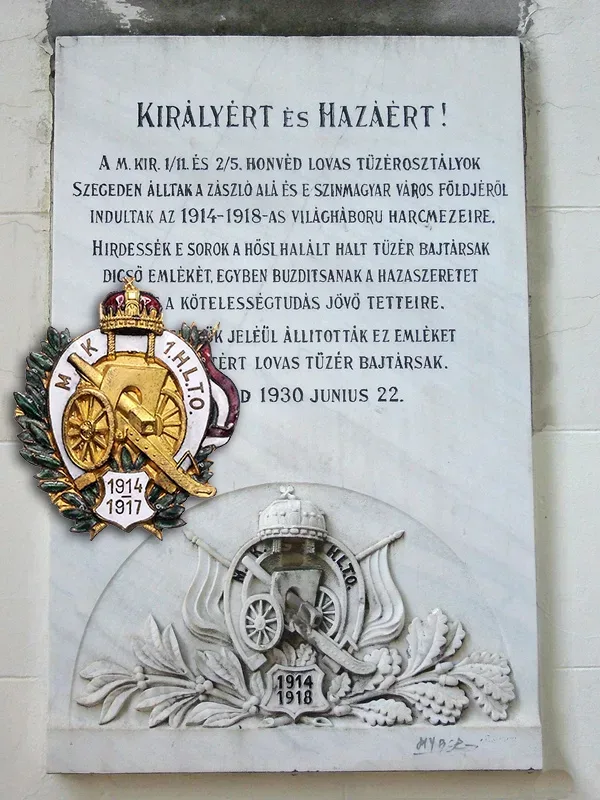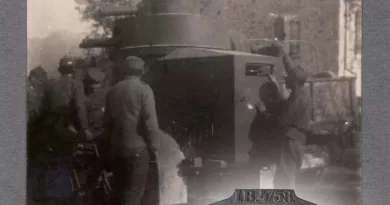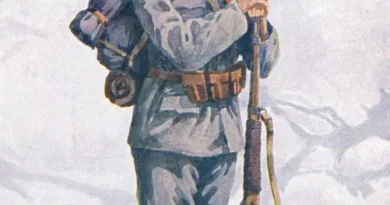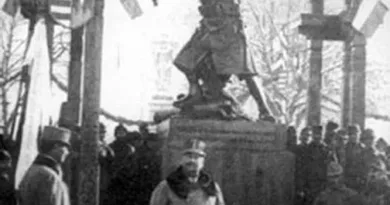Szeged’s Honvéd mounted artillery divisions
I know the badges of two Honvéd mounted artillery units. For a long time, I couldn’t get much information about the badges, or the units themselves. Then an acquaintance of mine from Szeged showed me one of the badges on a memorial plaque erected in 1930. It is located on the side of the Roman Catholic church in Rókus, Szeged. According to the plaque’s inscription, both mounted artillery divisions were established in the city. The 1/11th was assigned to the 11th Honvéd Cavalry Division, the 2/5th to the 5th Honvéd Cavalry Division. This is shown by the numbering too.
On the eve of the Great War, the cavalry divisions were organized in such a way that they were the fast-attacking wedges in mobile warfare. Their task was to get behind the enemy and surround them. Cavalry regiments were therefore supplemented by fast-moving artillery. The artillerymen were given guns similar to regular field artillery regiments. The cannons and the wagon were pulled by cogs. The difference was that the operators did not sit on top of the gun and wagon in march, but rode on horseback themselves. This significantly accelerated the pace of marching.

The establishment of the Honvéd artillery only began immediately before the Great War. Between 1914 and 1916, only the 1st Honvéd Mounted Artillery Division operated (assigned to the 11th Cavalry Division). Its crew came from the VI. and the VII. corps recruiting areas. In April 1916, the 2nd Honvéd Mounted Artillery Division was established and assigned to the 5th Honvéd Cavalry Division. Both units were organized in Szeged. Unfortunately, I was unable to obtain information about their location in Szeged.




